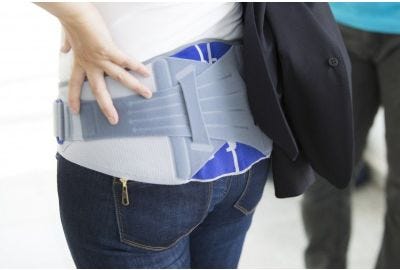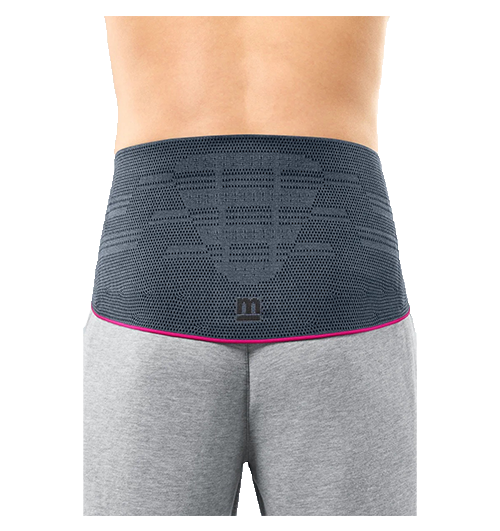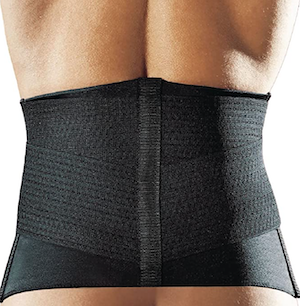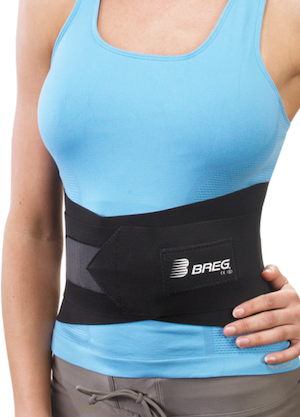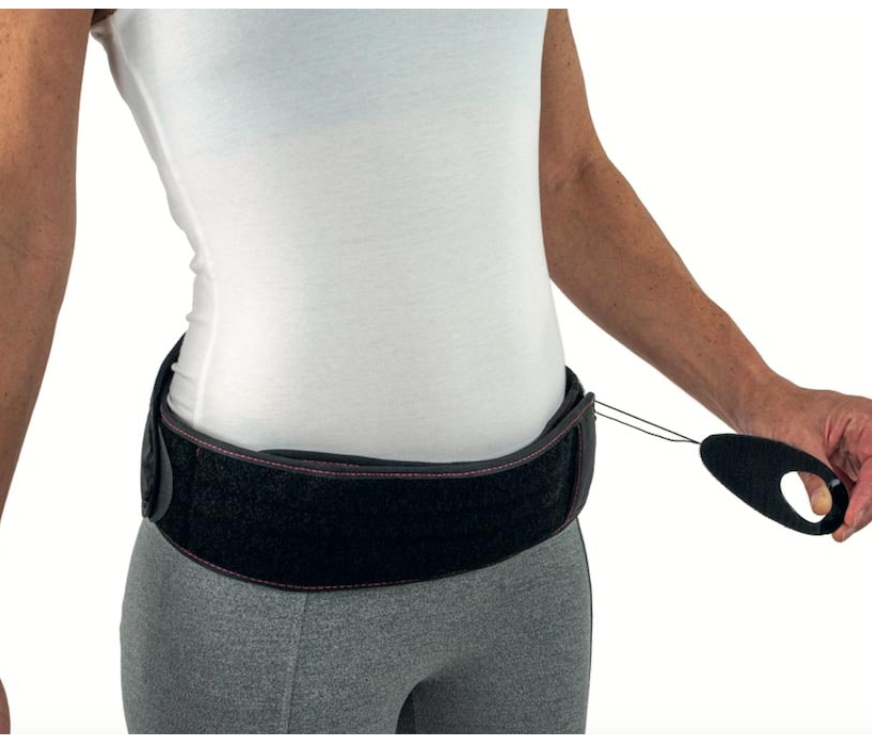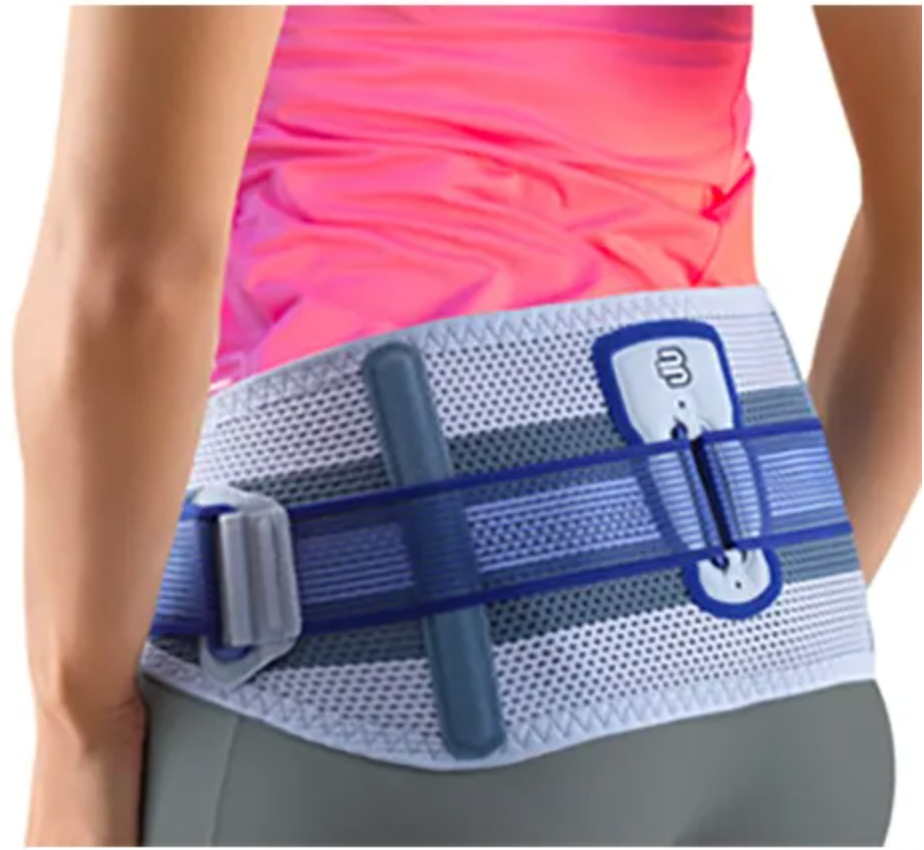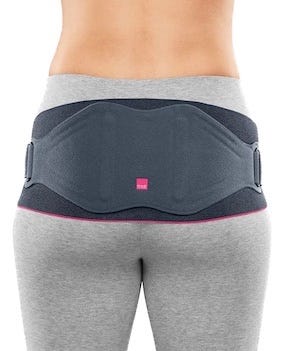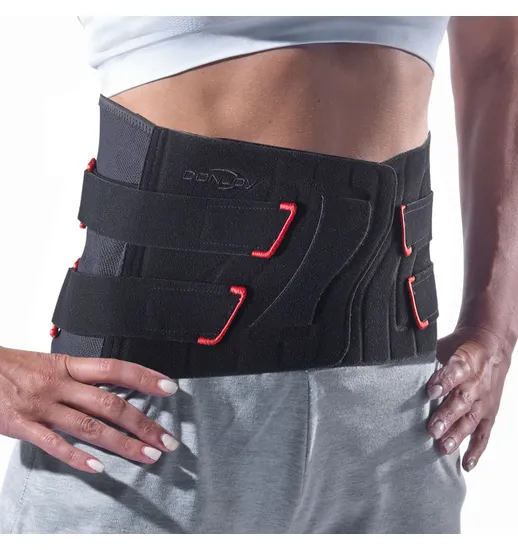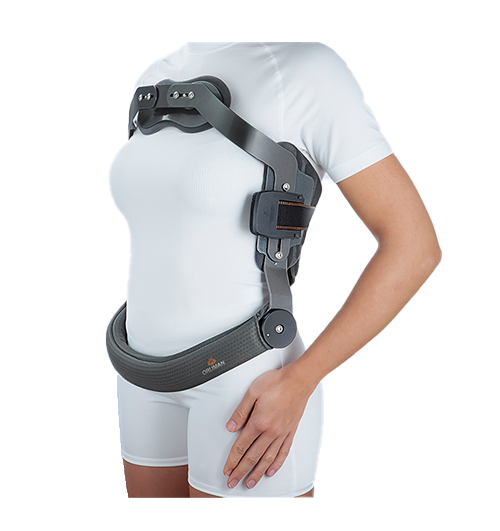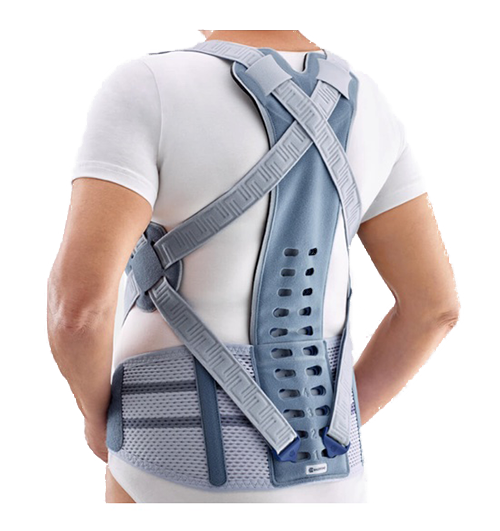What are back braces used for?
Back braces are an effective tool for management of pain, protection during activity, as well as prevention of re-injury. They are also used for post-operative support while you're healing.
Back pain, particularly in the lower (lumbar) back is very common among adults of all ages (around 4 out of 5 adults will experience back pain during their life). In general, back pain can be from a strain (to muscles or tendons) in the back, or an orthopaedic issue such as arthritis, or disk injury (such as a herniated disc).
You probably already know the common activities that cause back pain from your own personal experience: improper lifting (bending over without using our legs to pick up something heavy), poor posture (slouching at your desk), and general overuse (shoveling, raking leaves, etc.). Your spine can also be injured suddenly from (an acute injury) lifting something incorrectly, a twisting force, or other trauma (like falling).
Back pain can feel 'sharp' or be more dull and achy. In many cases the pain may radiate to your bottom or down the back of your legs (sciatica). Pain can be worse in certain positions (bending over) and may get better when you lie down (some people find relief when lying on their stomach).
Most minor back pain gets better with rest, use of ice, and over the counter pain medication. Moderate or severe back pain may require Physical Therapy, injections or even surgery.
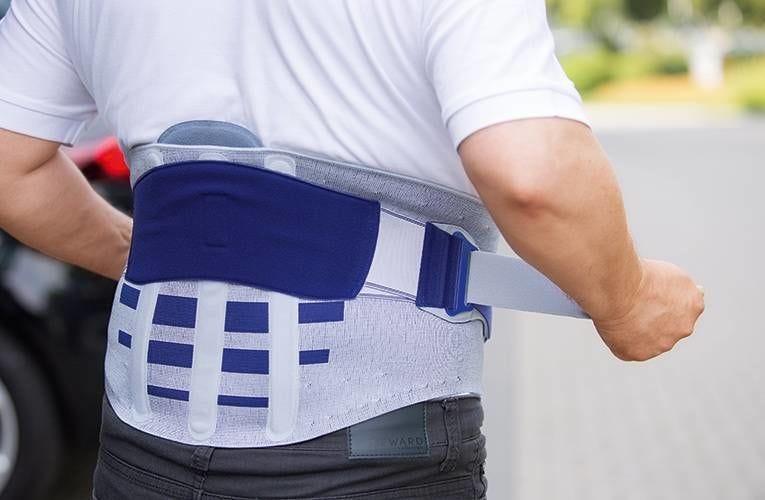

Back braces help by:
- Adjusting posture to encourage proper alignment of the spine
- Providing support for weak or injured muscles
- Limiting range of motion from bending and twisting. With a flexible brace you can still bend forward within a certain range
- Supporting a weakened joint (through compression of the torso / pelvis). This includes the sacroiliac joint
- Relaxing tense muscles through compression and massage effect from integrated back pads.
Types of back braces and when to use them
Back braces fall into three broad design categories: flexible (elastic), semi-rigid, and rigid. They are also categorized based on what part of the back you are supporting: Sacral (hip area), Lumbar (lower back), Thoracic (middle back), and Cervical (neck area, which we don't address in this blog post). The type of brace you need depends on what back condition you're trying to treat and your lifestyle needs.
Flexible, Elastic Braces
Use for lumbar (lower back) support and stabilization. General low back pain, protection during activities, and support for weakened or arthritic joint, and sciatica. These braces sit around your torso just at/below the belly button (navel).
Flexible elastic braces are primarily used for the lower back. They typically include vertical stays (plastic) at the front, back, or sides of the brace to provide gentle immobilization and to help the brace retain it's shape (prevent it from rolling when you put it on).
They are made from elastic knitted fabrics designed to be breathable, skin friendly, and with soft edges that won't dig into your skin to allow for more comfortable wearing times. Most designs include velcro fastening, side pulls, and/or hand straps that make it easier for you to put the brace on (as you wrap it around you at the front).
Some designs include a lumbar pad (at the back) to provide a massage effect to the muscles of the lower back with every movement to help to stimulate blood flow to reduce tension in the lumbar region. Relaxation of these muscles can also aid in pain management.
Popular examples of flexible low back braces
Sacroiliac (SI) Joint Braces
Use for support of the sacral spine (which is below the lumbar spine) to stabilize and support the sacroiliac joint. Pre and post-pregnancy, sprained SI ligament, hyper-mobility, and spasm/pain in the muscles.
Sacral belts are usually made from more 'stiff' nylon belt like materials and normally don't have 'stays'. These braces sit across the hips (more like a belt) and usually include a secondary strap to make it easier to apply a more snug fit. The intent of this style of brace is for those suffering from sacroiliac joint dysfunction, or piriformis syndrome to reduce micromovements at the sacroiliac (SI) joint in the pelvis.
Popular examples of SI braces
Semi-Rigid and Rigid Back Braces
Use for treatment of injuries and diseases of the lumbar (low back) and thoracic (mid back) spine. Post-operative lumbar spine stabilization, degenerative disc disease, and more severe ligament sprains & muscle strains of the lumbar and thoracic regions.
Rigid back braces are designed to provide greater stabilization and restrict movement for the lower lumbar and thoracic spine as well as correcting posture. These braces are used to decompress the spine in patients recovering from surgery, fracture or injury. Common conditions that are treated with a more rigid style back brace include lumbar disc displacement, osteoporosis, disc herniation and degeneration, post-operative laminectomy, post-operative disectomy, spondylolisthesis, post-operative fusion and spinal stenosis.
Semi-Rigid, and Rigid back braces are made with materials designed to limit movement. They typically include long aluminum (or other rigid material) back pads, crossed tensioning straps, as well as elastic mesh material that surrounds the torso to compresses the abdomen. Another style of rigid back brace is the 'jewett' style that has three points of support to prevent hyperextension.
Popular examples of semi-rigid and rigid back braces
Tips for wearing a back brace
Understand Your Diagnosis
Back braces are used to manage a wide range of conditions so it's important that you see your doctor or physiotherapist before using a brace to confirm your diagnosis and location of injury.
Many people assume that the most 'immobilizing' brace is best, but that is not always the case. It is important to select a brace that is suitable for your specific diagnosis and for that reason, we do not recommend an immobilizing back brace unless a specific diagnosis warrants it.
If you have general low back pain, try a flexible, elastic brace. For a diagnosis like a herniated disc, a semi-rigid immobilization brace would be recommended in addition to exercise.
In selecting a back brace, the area of injury should be closer to the centre of where the brace would sit on your spine so that stabilization can occur above and below the injury site. Wearing a brace where the upper edge of the brace just touches the site of injury would not assist you, and could even cause more discomfort. If you know the specific vertebrae that is affected, we can assist you in locating the best option. Contact our Healthcare Team for assistance.
Keep Your Back Strong!
Back braces can help you manage pain, recover from an injury, and protect your back during activity. However, if you rely on a back brace too much you risk weakening your core and back muscles. It's important to keep your back strong, and follow an exercise or rehab program for strengthening and stretching given to you by your doctor or physical therapist. This is important to help you support your spine, avoid poor posture, lower back pain and future muscle injuries.
Length of Use
We recommend using the braces only during activities that typically cause you pain. The general recommendation is not to wear your back brace all day long. However for more serious diagnoses, a physiotherapist or physician may approve the use of the brace for longer duration use.
Protect Your Skin
It’s important to keep the skin under the brace as dry as possible. Excess moisture can cause irritation and lead to sores. Avoid using creams and lotions on the skin beneath the brace. If skin irritation is a problem for you, wear a thin t-shirt or other tight fitting clothing underneath the brace.
Keep it Clean
It's a good idea to keep your back brace free of dirt and bacteria. Most back braces can be cleaned with water and mild soap, washing by hand. Before you clean your brace remove any panels and padding to clean those parts separately. Never use bleach or harsh detergents on your brace. Make sure your brace is dry before using it again.
Many of the materials used in the construction of back braces can collect debris around areas like velcro straps. Use a lint roller to remove lint from your back brace to ensure that the straps work properly and can secure the brace properly.
Interested in a back brace but not sure which option is right for you? Contact our Healthcare Team for fast advice and find the best back brace for your condition.

